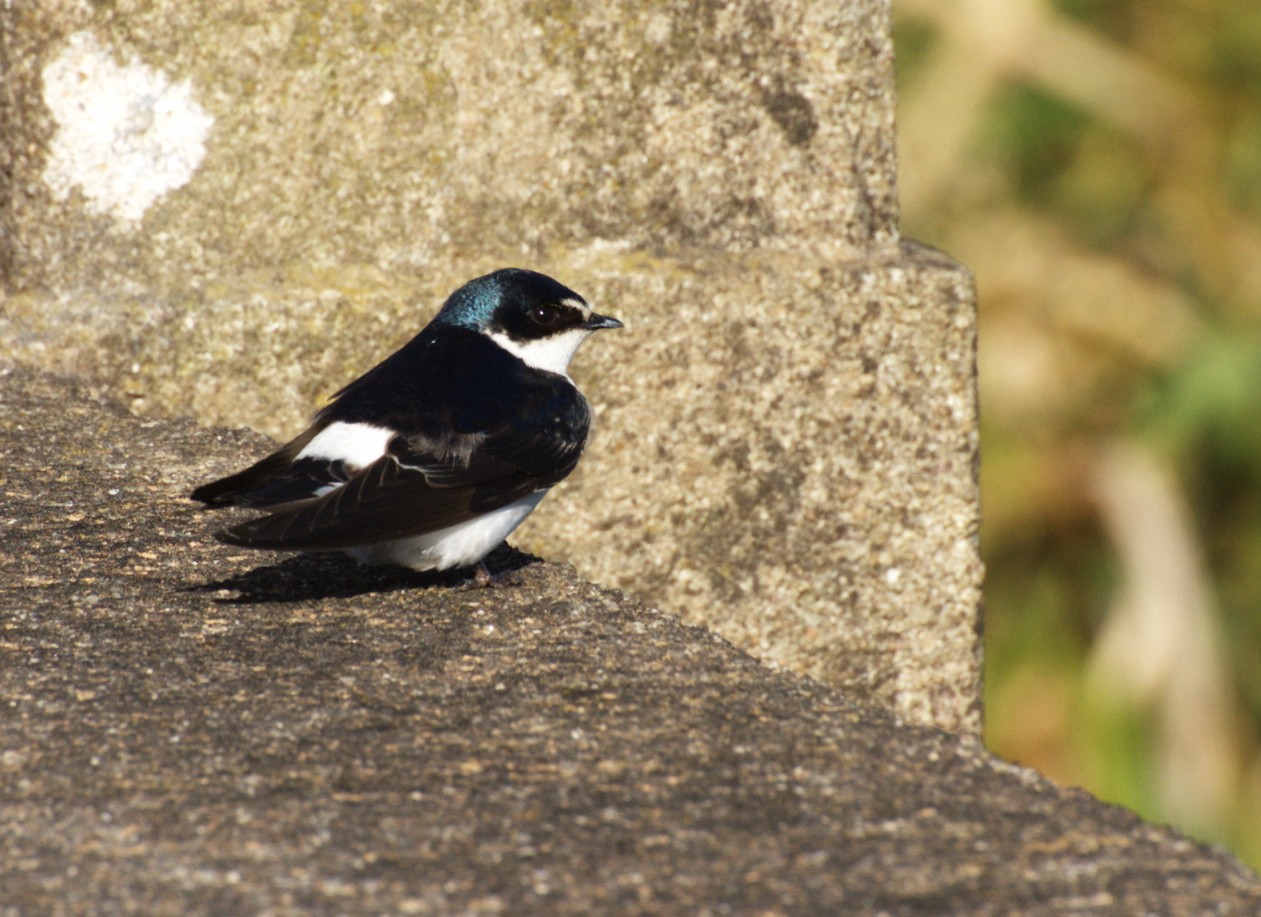White-rumped Swallow
A species of Typical American Swallows Scientific name : Tachycineta leucorrhoa Genus : Typical American Swallows
White-rumped Swallow, A species of Typical American Swallows
Botanical name: Tachycineta leucorrhoa
Genus: Typical American Swallows
Content
Description General Info
Description
The white-rumped swallow measures 13 centimetres (5.1 in) in length and weighs 17–21 grams (0.60–0.74 oz). It has an average wingspan of 115.7 millimetres (4.56 in). It has a white supraloral streak, a white streak above its eye, and black lores and ear coverts. The lores and ear-coverts have a blue-green gloss. It has black wings, with white tips on its inner secondaries, tertials, and greater wing-coverts. The white tips erode with age. The tail is black and has a shallow fork. The white-rumped swallow also has, as the name implies, a white rump. The rump is not totally white; it has some fine shaft streaks. The rest of the upperparts, in addition to the crown, nape, and forehead, are a glossy blue. These features, when this bird is not breeding, are more greenish-blue. The underparts and underwing-coverts are white. The bill, legs, and feet are black, and the irides are brown. The sexes are alike, and the juvenile can be distinguished by its dusky breast and the fact that it is duller and more brownish. This swallow is similar to the Chilean swallow but can be differentiated by the Chilean swallow's lack of a supraloral white streak. The Chilean swallow also seems to keep its glossy blue upperparts when not breeding. The white-rumped swallow is, in addition, larger than the Chilean swallow. The song of the white-rumped swallow is often described as a soft gurgling or a broken warble. It usually sings while flying at dawn. The call is described as a quick and toneless zzt. The alarm note it uses is short and harsh. 
Size
13 cm
Nest Placement
Cavity
Feeding Habits
White-rumped Swallow primarily consume insects like flies, beetles, ants, and moths. Foraging alone or in small groups, they adeptly catch prey mid-flight near water or open woodlands, and opportunistically follow humans and animals disturbing insects.
Habitat
The white-rumped Swallow predominantly resides in open and semi-open environments with proximity to water bodies, such as lagoons and marshes. These birds are also commonly found at the edges of woodlands and near human settlements. They are typically seen foraging above water, in grasslands, and within open woodlands.
Dite type
Insectivorous
General Info
Feeding Habits
Bird food type
Behavior
After the breeding season, the white-rumped swallow forms flocks that sometimes consist of hundreds of individuals. These flocks frequently consist of both the white-rumped swallow and other species of swallows. 
Distribution Area
This swallow is native to Argentina, Bolivia, Brazil, Paraguay, Peru, and Uruguay. It inhabits open and semi-open country near water, the edge of woodland, and human settlements. It also occurs in dry savannas, degraded former forest, and both subtropical and tropical seasonally flooded grassland. It is additionally known to occur in the pampas of Argentina and Uruguay. During the austral winter, the birds in the southern population usually move to the northern parts of its range. This bird can be found at altitudes ranging from sea level to 1,100 metres (3,600 ft). 
Species Status
The white-rumped swallow is classified as a least-concern species by the IUCN. This is due to its large range, estimated to be 5,580,000 square kilometres (2,150,000 sq mi), its increase in population, and its large population. Increase in the availability of artificial nest sites may benefit this bird, and could be a factor in its increasing population. It is described as being fairly common in its range. 
